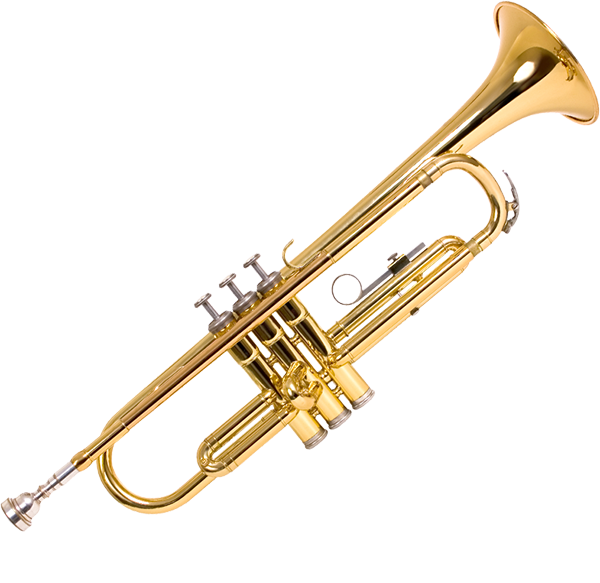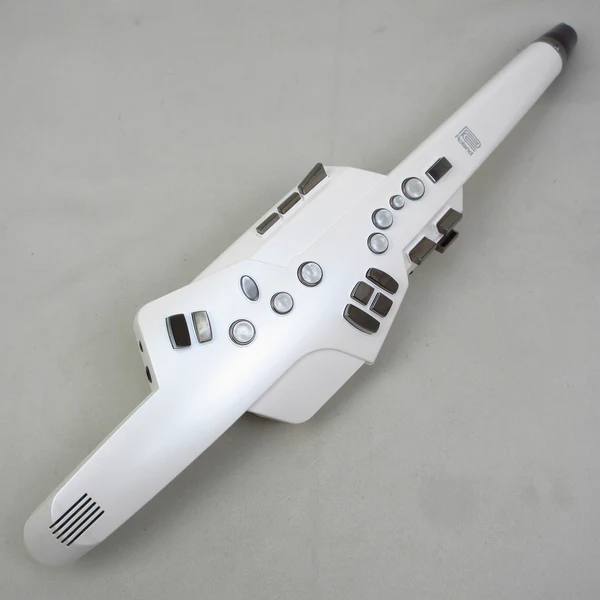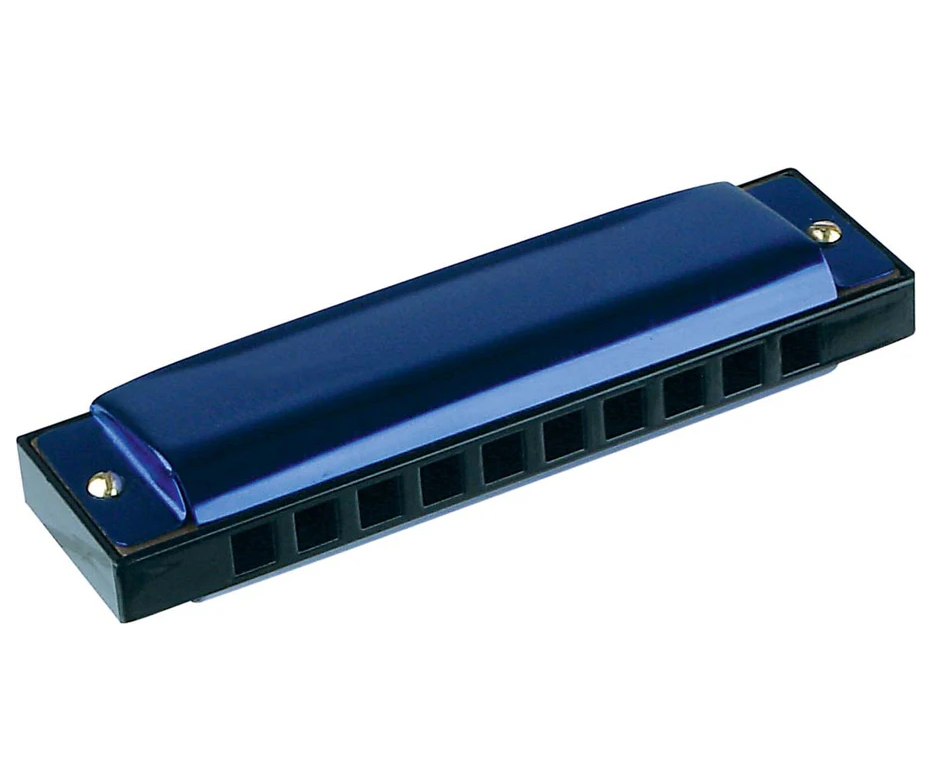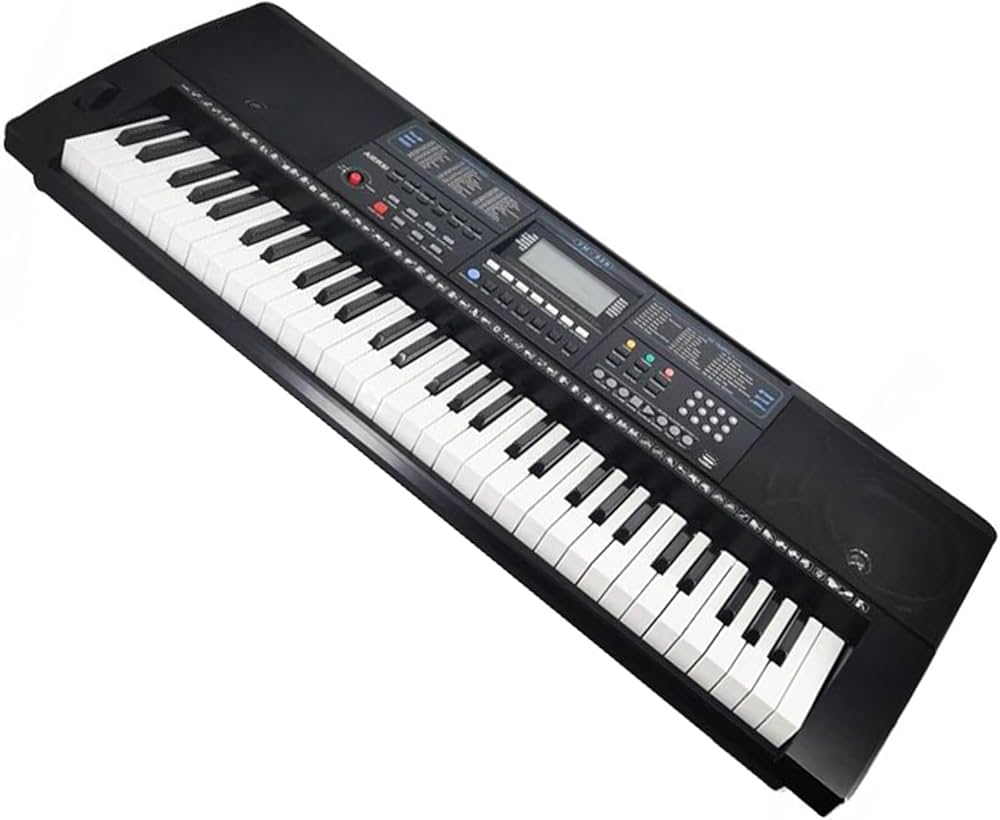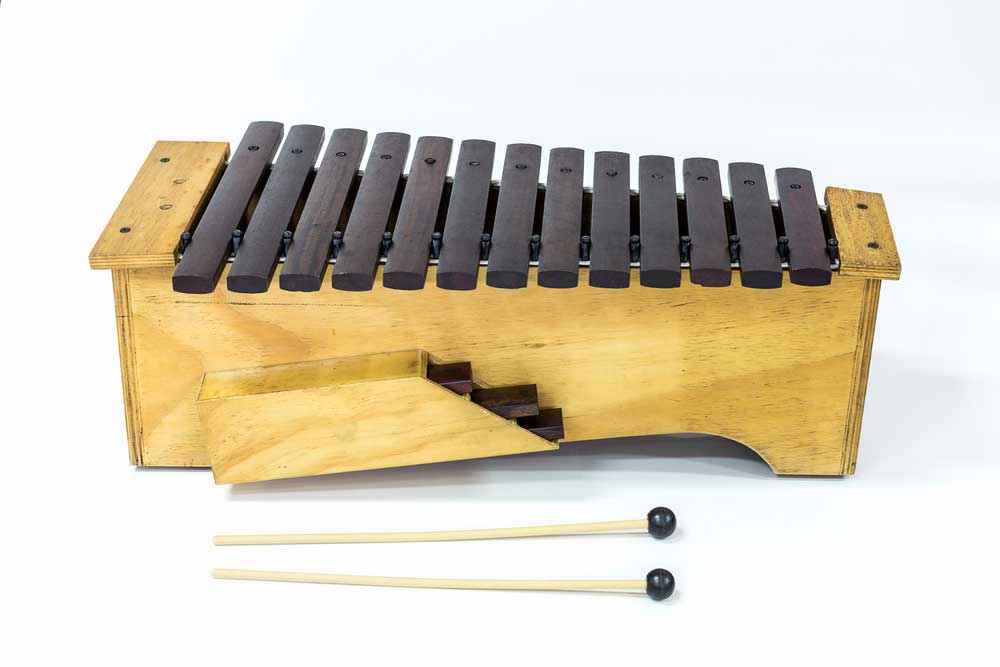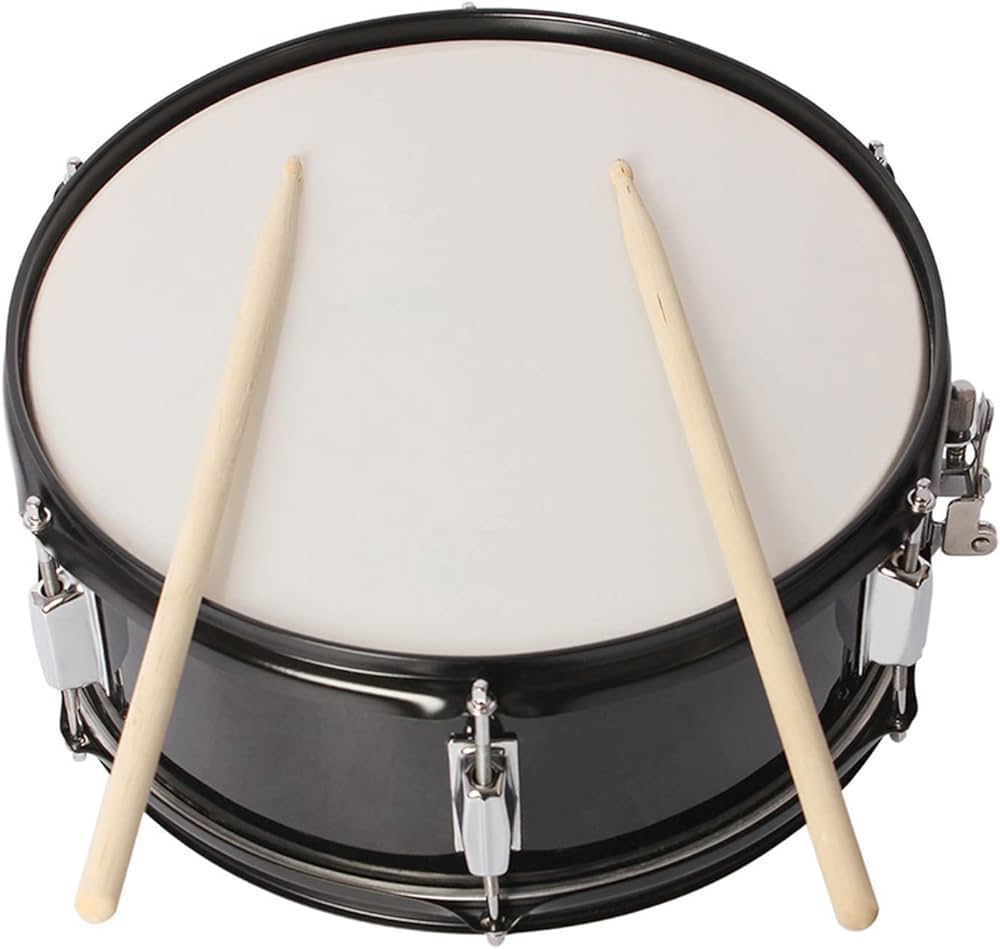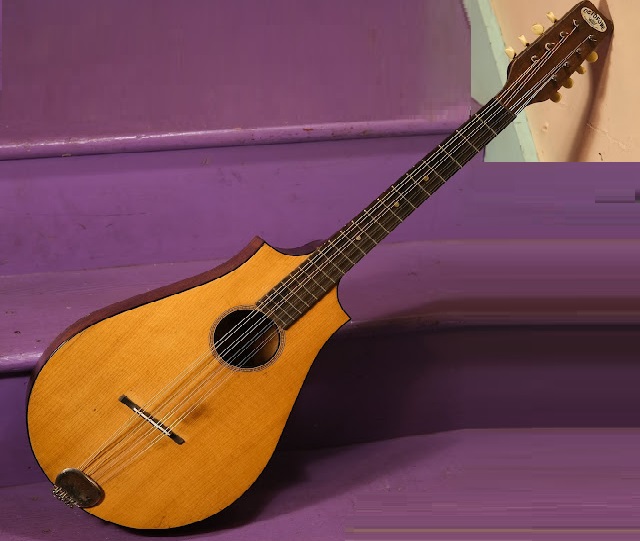Octofone
Plucked Instruments
America
Between 1901 and present
Video
The Octofone, also spelled Octophone, is a stringed musical instrument developed in the United States during the early 20th century. Marketed as an “eight-in-one” instrument by the Regal Musical Instrument Company, it was designed to emulate the tonal characteristics of eight different instruments through adjustable tunings and string configurations. Physically resembling a mandolin or octave mandolin, the Octofone features a teardrop-shaped body with a double-pointed design, a short scale length of approximately 21 inches, and eight strings arranged in four doubled courses. Its construction blends elements of mandolin-family instruments with practical adaptations for versatility, such as a birch or mahogany body and a spruce top. The instrument’s design catered to musicians seeking a single tool for multiple roles, particularly during the 1920s–1930s when tenor banjos, ukuleles, and mandolins dominated American music. Despite its innovative concept, the Octofone’s lightweight build and structural fragility limited its longevity, though surviving examples remain prized for their warm, resonant tone and historical significance.
Type of Instrument
The Octofone is a composite chordophone classified under the Hornbostel-Sachs system as a plucked string instrument. It belongs to the mandola family, sharing similarities with the octave mandolin, mandocello, and tenor guitar. Unlike traditional mandolins, the Octofone’s defining feature lies in its adaptability: players could reconfigure its tuning to mimic instruments ranging from the ukulele to the mandocello. This versatility positioned it as a hybrid instrument, bridging the gap between different string families. While its primary function involves strumming or fingerpicking, the Octofone’s construction allows for both melodic and rhythmic roles, making it suitable for folk, jazz, and early country music. The instrument’s eight strings, organized in four courses, enable chordal richness and sustain comparable to larger-bodied instruments, while its compact size retains the playability of smaller mandolins.
History
The Octofone emerged in 1928 amid a flourishing American musical landscape, where portable, multi-purpose instruments were highly valued. The Regal Musical Instrument Company of Chicago patented the design, capitalizing on the popularity of mandolin orchestras and the rising demand for tenor banjos in jazz ensembles. Its introduction coincided with the tail end of the mandolin craze that swept the U.S. in the early 20th century, as manufacturers sought to innovate within a saturated market. While the Octofone never achieved mainstream success, it found niche appeal among session musicians and hobbyists. Production likely ceased by the late 1930s due to structural limitations and shifting musical trends, though exact records remain scarce.
Today, the instrument is primarily encountered in vintage collections and folk revival circles, with surviving models dating from the late 1920s to mid-1930s. Its legacy persists in modern adaptations, such as boutique luthiers crafting reinforced versions to accommodate contemporary playing styles.
Construction and Physical Structure
The Octofone’s construction reflects a balance between affordability and functionality, typical of early 20th-century American instrument manufacturing. Its body measures approximately 33.5 inches in total length, with a lower bout width of 10 5/8 inches and a depth of 3 1/8 inches. The top is typically solid spruce, chosen for its resonant qualities, while the back, sides, and neck are birch or mahogany. A distinctive dowel joint connects the neck to the body, a cost-saving measure that contributed to the instrument’s tendency to warp or loosen over time. The fretboard, often ebonized maple, includes 18–20 frets and dot inlays for navigation. Ladder bracing supports the soundboard, though this lightweight design made the top prone to bellying under string tension. Original models featured a “Bell Brand” tailpiece and friction pegs, later replaced by modern tuners in restored examples. The scale length of 21 3/8 inches positions it between a mandolin and mandocello, enabling a broad tonal range. However, the combination of thin woods and minimal bracing necessitated the use of light-gauge strings to prevent structural damage, a critical consideration for players seeking to preserve vintage instruments.
Types and Variations
Regal produced at least three primary Octofone models, differentiated by materials and target markets. The No. 25, the most common variant, featured a birch body with a spruce top and dark lacquer finish to simulate higher-end woods. The No. 26 substituted mahogany for birch, offering slightly richer midtones and a more durable build. A third, rarer version incorporated all-birch construction, emphasizing brightness and projection. Later models from the 1930s occasionally included reinforced necks and thicker maple components to address stability issues, though these modifications were inconsistently applied. Modern reproductions, such as those by boutique builders, often enhance the original design with truss rods, carbon fiber reinforcements, and improved joint mechanics. These contemporary versions cater to musicians requiring greater durability for heavy strumming or alternative tunings, while maintaining the vintage aesthetic and tonal character that define the Octofone’s appeal.
Characteristics
The Octofone’s tonal profile is marked by warmth and clarity, with a pronounced midrange that suits both chordal accompaniment and melodic lines. When tuned as an octave mandolin (G2-D3-A3-E4), it produces a rich, harp-like resonance, while mandocello tuning (C2-G2-D3-A3) emphasizes bass response suitable for rhythmic foundations. The instrument’s responsiveness to fingerpicking and flatpicking allows dynamic expression, though its delicate build demands a nuanced touch. Players often note its ability to blend seamlessly with acoustic ensembles, providing a textural bridge between guitars and mandolins. Despite its historical reputation for fragility, a properly restored Octofone offers surprising sustain and volume, particularly when strung with phosphor bronze or silk-and-steel strings. The instrument’s ergonomics, including a narrow nut width and flat fretboard, facilitate rapid fingerstyle passages, making it a favorite among folk and bluegrass musicians exploring unconventional timbres. Its enduring charm lies in this duality: a vintage artifact capable of modern musical versatility, embodying the innovative spirit of early 20th-century American luthiery.
Playing Techniques and Sound Modifications
The Octofone, also known as the Octophone, offers a unique palette of playing techniques due to its design as a multi-purpose string instrument. It is typically played with a pick or plectrum, similar to other members of the mandolin family. The instrument can be strummed or plucked, allowing for both chordal accompaniment and melodic playing. The double courses of strings, which are a hallmark of the Octofone, provide a rich, resonant sound that can be manipulated by varying the attack and angle of the pick. Players often experiment with tremolo picking, a rapid back-and-forth motion that produces a sustained, shimmering effect reminiscent of mandolin or mandola styles. One of the Octofone’s most distinctive features is its ability to be tuned in multiple ways, emulating the tonal ranges of eight different instruments: tenor guitar, tenor banjo, ukulele, taro patch, tiple, mandolin, mandola, and mandocello. This is achieved by simply changing the tuning of the strings, which allows the performer to access a wide variety of timbres and pitch ranges. For example, tuning the Octofone in fifths (such as G-D-A-E) gives it the voice of an octave mandolin, while tuning it in fourths and thirds can approximate the sound of a tiple or ukulele. This versatility in tuning means that players can adapt the instrument to suit different musical genres and ensemble contexts, from folk and old-time to early jazz and parlor music.
Sound modifications can also be achieved through string choice and setup. Using lighter or heavier gauge strings can alter the instrument’s response and tonal character. Some players may experiment with different bridge materials or saddle heights to further refine the Octofone’s voice. Additionally, the instrument’s relatively fragile construction and lightweight build contribute to its unique tonal qualities, producing a sound that is both bright and delicate, with a quick decay that lends itself well to rhythmic strumming and intricate melodic passages.
Famous Compositions
The Octofone’s brief period of popularity and its niche status mean that there are few, if any, compositions written specifically for the instrument by well-known composers. Instead, its repertoire consists largely of adaptations and arrangements of music intended for related instruments such as the mandolin, tenor guitar, or tiple. Players often perform traditional folk tunes, early jazz standards, and parlor songs, taking advantage of the Octofone’s ability to mimic the sound and range of several different instruments. Because the Octofone can be tuned to match the pitch and intervals of a mandolin or mandola, it is capable of performing pieces from the standard mandolin repertoire, including works by classical composers such as Raffaele Calace or more contemporary pieces from the American folk tradition. Similarly, when tuned like a tenor guitar or banjo, it can handle chordal accompaniment and melodic lines found in early jazz and dance band arrangements from the 1920s and 1930s.
While there are no universally recognized “famous compositions” for the Octofone, its flexibility has allowed it to find a place in the hands of creative musicians looking to explore new textures in ensemble settings or solo performance. Its ability to cover multiple instrumental roles makes it a valuable tool for arrangers and performers interested in vintage American music.
Most Influential Players
The Octofone’s relatively obscure status and short production run mean that it has not produced a roster of widely recognized virtuosos or influential players in the way that other stringed instruments have. Most of its players have been enthusiastic amateurs, collectors, or musicians with a particular interest in unusual or historical instruments. There are, however, a handful of modern musicians and instrument historians who have helped to keep the Octofone alive in the public consciousness. These individuals often share their experiences and performances through online forums, blogs, and social media, offering insights into the instrument’s capabilities and quirks. Their efforts have contributed to a modest resurgence of interest in the Octofone among vintage instrument enthusiasts and folk musicians. Because the Octofone is so closely related to the mandolin family, many of its most skilled players are also accomplished mandolinists or multi-instrumentalists. Their ability to adapt mandolin, mandola, or tenor guitar techniques to the Octofone has expanded the instrument’s expressive range and demonstrated its potential as a versatile musical tool.
Historical Performances or Concerts
The Octofone was introduced in 1928 by the Regal Musical Instrument Company and was marketed as a novelty capable of replacing eight different instruments. Its heyday coincided with the late 1920s and early 1930s, a period when American music was undergoing significant changes and experimentation. During this time, the Octofone was likely featured in informal settings such as parlor concerts, vaudeville acts, and amateur music gatherings, where its novelty and versatility would have been a source of fascination and entertainment. While there are no records of major historical performances or concerts dedicated exclusively to the Octofone, it is reasonable to assume that it was used by musicians seeking to add new sounds to their ensembles or to simplify their instrument collections. Its affordability and multi-instrument functionality made it an attractive option for small bands and traveling performers who needed to cover a range of musical roles without carrying multiple instruments.
In recent years, the Octofone has occasionally appeared in vintage instrument showcases, folk festivals, and online video performances, where its unusual design and sound continue to intrigue audiences. These modern appearances serve as a testament to the enduring appeal of the Octofone’s inventive spirit and its place in the history of American musical innovation.
Maintenance and Care
The Octofone’s construction, while innovative, presents certain challenges when it comes to maintenance and care. The instrument is typically made with a birch neck, back, and sides, and a spruce top. The neck is attached to the body using a dowel rod joint rather than a traditional dovetail, making it less robust than other stringed instruments. Over time, many Octofones have become fragile, and their lightweight build means they are particularly susceptible to damage from impacts, humidity changes, and string tension. Proper care of an Octofone involves several key practices. First, it is important to store the instrument in a stable, humidity-controlled environment to prevent warping, cracking, or separation of the wood joints. Using a hard case or padded gig bag can provide additional protection from physical damage. Regular inspection of the neck joint, bridge, and body is essential, as these areas are prone to wear and may require professional repair or reinforcement.
String selection and tension are also critical factors in maintaining the Octofone’s structural integrity. Because the instrument was designed to be lightly built, using heavy gauge strings or tuning to pitches that place excessive stress on the neck and body can lead to damage. Players are advised to use light or medium gauge strings and to tune the instrument carefully, avoiding tunings that exceed the intended tension range. Cleaning the Octofone should be done with a soft, dry cloth to remove dust and fingerprints. Any repairs, such as resetting the neck, replacing the bridge, or addressing cracks and separations, should be carried out by an experienced luthier familiar with vintage instruments. With proper care, an Octofone can remain playable and attractive for many decades, preserving its unique voice and historical significance.
Interesting Facts and Cultural Significance
The Octofone stands out as one of the most inventive and ambitious instruments produced by the Regal Musical Instrument Company during the early 20th century. Marketed as “eight instruments in one,” it was designed to appeal to musicians seeking versatility and value during a time of economic uncertainty and rapid musical change. Its ability to emulate the sounds of multiple stringed instruments by simply changing the tuning was a bold attempt to address the needs of both amateur and professional players. One of the most interesting aspects of the Octofone is its distinctive shape, which features a double cutaway body reminiscent of an elongated mandolin or a small-bodied guitar. This design not only contributes to its visual appeal but also reflects the instrument’s hybrid nature, blending elements from several different stringed instrument families. The use of birch and spruce, as well as the ladder bracing and dowel rod neck joint, further set the Octofone apart from its contemporaries.
Despite its innovative design, the Octofone was not a commercial success and was discontinued after only a few years in production. Its relative rarity today makes it a sought-after collector’s item, with surviving examples valued for their historical and aesthetic significance as much as for their musical potential. The instrument’s quirky charm and adaptability have endeared it to a small but passionate community of musicians and collectors who appreciate its place in the broader story of American musical instrument development.
Culturally, the Octofone represents an era of experimentation and optimism in American music, when manufacturers were eager to push the boundaries of design and functionality. Its story is a reminder of the ingenuity and resourcefulness that characterized the musical landscape of the 1920s and 1930s, as well as the enduring appeal of instruments that offer new ways to create and experience music.
FAQ
What is the historical background of the Octofone?
The Octofone was developed in the 1920s by the Regal Musical Instrument Company in the United States. It was marketed as a versatile instrument that could mimic eight others, hence the name. Its creation catered to musicians seeking multipurpose stringed instruments. However, it saw only limited commercial success.
What are the main features and construction of the Octofone?
The Octofone is a flat-backed, teardrop-shaped stringed instrument with eight strings in four courses. It has frets like a mandolin, a floating bridge, and a flat soundboard. It was designed for multiple tunings to replicate instruments such as the mandola, tenor banjo, or ukulele. It’s primarily constructed from spruce and maple.
What are the uses and sound characteristics of the Octofone?
The Octofone is used in folk, early country, and experimental music due to its hybrid sound. Its tone varies based on tuning, ranging from mellow like a ukulele to bright like a mandolin. It suits solo and ensemble play. Its versatility allows musicians to explore multiple timbres within a single instrument.
 Links
Links
References
Other Instrument
Categories

